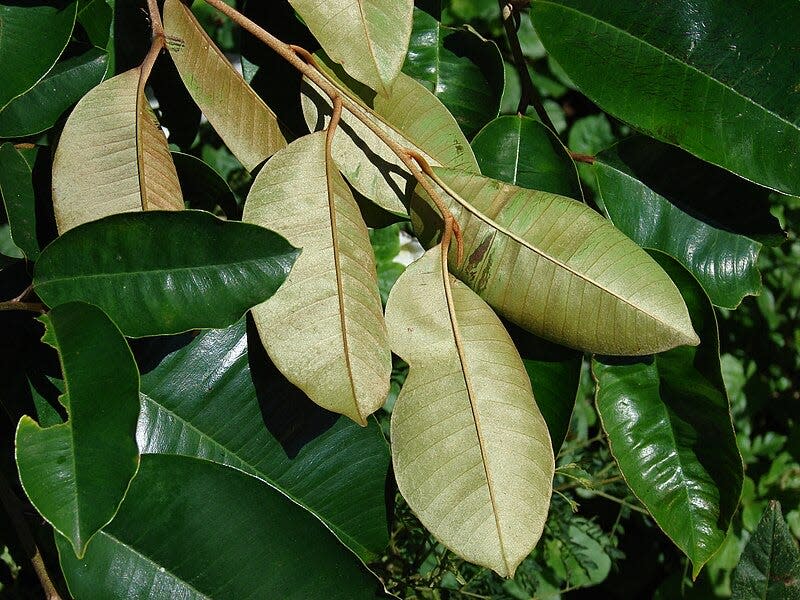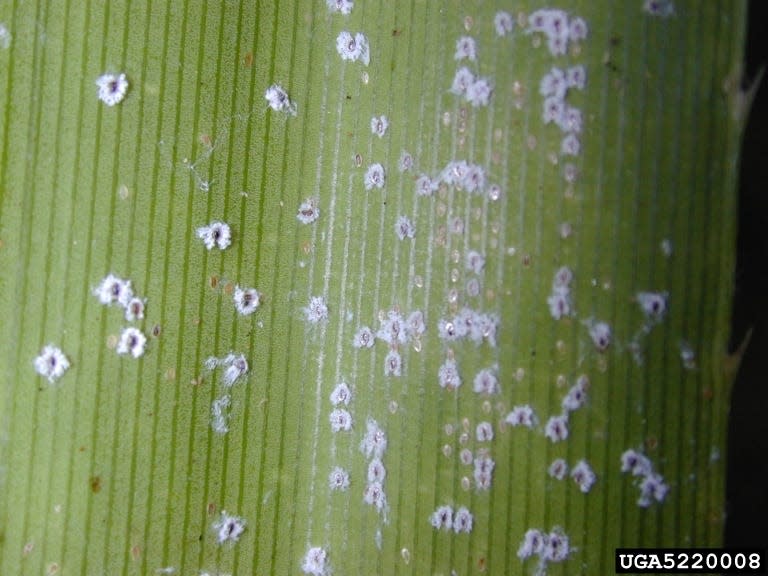This stunning Florida native is a lovely green year round, big or small, in sun or shade

If you appreciate versatility and lovely foliage, Florida’s native satin-leaf tree should have considerable appeal.
Content in full sun or deep shade, satin-leaf tree (Chrysophyllum oliviforme) is a slow-growing tree up to 40 feet tall – but usually much smaller. The foliage of this evergreen species delivers a one-two punch. The upper surface is incredibly glossy, as if varnished, while the underside is covered with a carpet of fine bronzy hairs. Indeed, few trees are as attractive on breezy, leaf-fluttering days.
Satin-leaf tree flowers – diminutive and greenish-white – aren’t eye-catching, but they’re fragrant and borne much of the year. Small, deep-purple fruit follow and are a hit with many bird species. Gardeners can consume the fruit too, though they’re decidedly gummy.
Serissa This Japanese native is always green, almost always blooming and needs little maintenance
Propagation is by seeds, which are extremely slow to germinate. Once seedlings appear, their growth is equally glacial. Fortunately, small containerized plants – as well as seeds – are usually available online.
Satin-leaf tree, though best for warmer areas of Central Florida, typically recovers from hard freezes.
Tipping the scales on scale insects
Of all the insect pests that prey on houseplants, I’ve always found scale insects the most difficult to eradicate.

These tiny sap-sucking critters live the high life underneath their shields, defying most efforts by gardeners to get rid of them. Even after I’ve used the most effective treatment I’ve come across – Systemic Houseplant Insecticide – the scales always reappear months later.
In a recent issue of Palms magazine, I discovered just how "never-say-die" scales are. In a glasshouse of the botanical garden in Jena, Germany, an infestation of a scale insect on a single palm (Cocothrinax crinita) was treated – seemingly successfully – in the 1980s. During the following years, insecticidal chemicals were used regularly throughout the glasshouse until 2015, when the garden’s management switched to bio-controls. The scales reappeared only on that palm – more than 30 years later – a period during which they were lying low in sufficient numbers to re-emerge if given the chance.
Think your trees have long life spans? This one can last thousands of years
Incidentally, about 8,000 species of scales have been recognized by science, so the odds don’t favor gardeners.
Plants grow better in barrels
Real barrels – whether half barrels retired from wineries or three-gallon containers manufactured expressly for plants – seem to promote rapid plant growth.
The benefits of barrels – crafted with wooden staves and iron hoops – have astonished me over the years when I cultivated everything from palms to tomato plants in them.
I recall growing several sylvester palms (Phoenix sylvestris), one to a barrel, and marveling at their exceptional vigor. The sole problem was lifting the nearly overgrown palms out of their woody containers – so I didn’t try. They were installed in the ground, barrels and all.
This article originally appeared on The Ledger: Satin-leaf tree is beautiful year round in sun or shade

